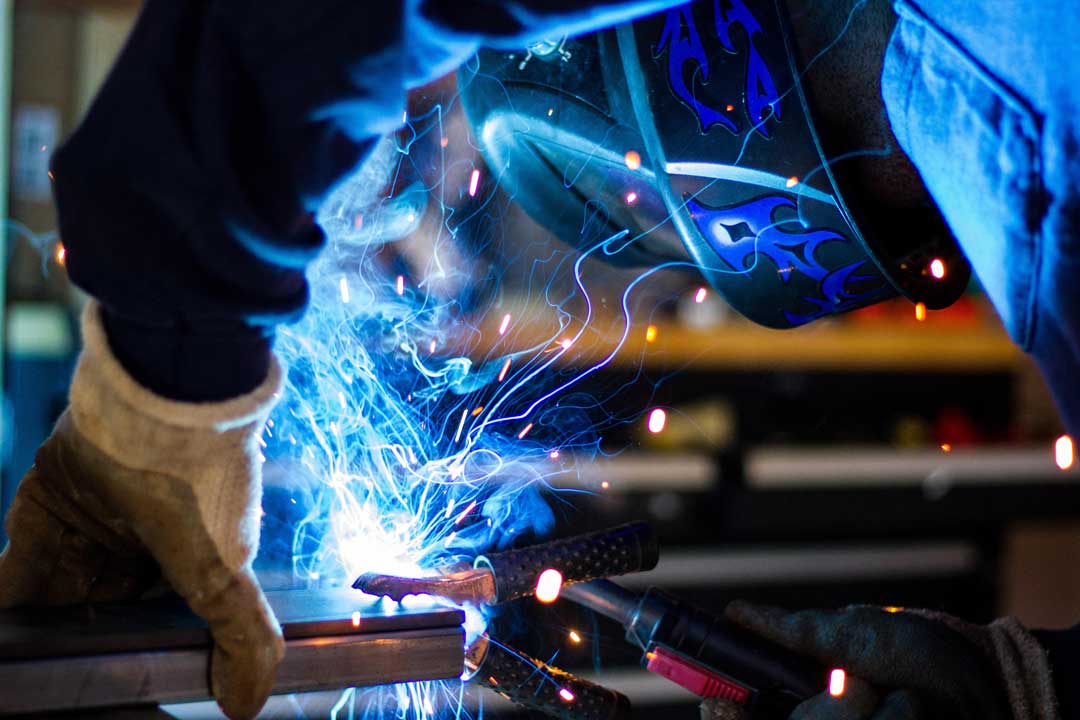
Table of Contents
Is dip brazing or welding going to be the best way to join a metal seam on your project? Both dip brazing and welding are proven, widely used methods of joining two pieces of metal together. In the right circumstances, both can offer a strong bond that provides durable, long-lasting performance. That said, there are circumstances where aluminum dip brazing is going to provide a superior bond that adds value to the final construction.
Read on to discover what aluminum brazing is and how it differs from welding. We also discuss the applications where aluminum brazing provides a better solution to join than welding.
What is aluminum brazing?
Aluminum brazing involves heating the base metal, but not to the point that it melts. Typically, it will be heated to just about 900°F. The liquid filler metal (a mix of aluminum and silicon, typically in the ratio 88:12) is streamed between the two base metal surfaces in a controlled flow.
During cooling, the filler forms strong metallic bonds with the base metal surfaces, creating an extremely strong bond.
In contrast, welding doesn’t involve the use of a binder or filler metal. To weld a joint, the two surfaces are heated to their melting point, which is when the two liquid metal surfaces combine. On cooling, a joint is formed.
What are the practical advantages of aluminum brazing?
Easier to work with two different metals or alloys
If you’re attempting to join two metals or metal alloys with melting points that differ significantly, the use of aluminum filler makes it easier to control the process. For example, if fusing titanium (which has a melting point of 3040°F with steel (which has a melting point of 1510°F), using a filler at around 900-1000°F ensures both surfaces are in the same state during the process.
Oxide free surfaces
On being exposed to air, many metals rapidly acquire a film of oxidized molecules on their surface. Welding two oxidized surfaces together can compromise the integrity of the weld. Unfortunately, keeping the metal surfaces oxide-free for long enough that the weld can be completed is extremely difficult. Whilst metal surfaces can be deoxidized through the use of acid baths or similar, even if the surface is wiped down rapidly with a neutralizer and then welded, air exposure and therefore further oxidation is almost inevitable.
In contrast, following chemical cleaning, brazing is usually completed in a controlled atmosphere. This eliminates the risk of oxidation, resulting in joins that aren’t compromised by exposure to the air.
Porosity
Porosity is due to small bubbles of nitrogen, oxygen, or hydrogen that get caught in the molten weld. It can lead to a compromised joint. The brazing process is completed by heating the pre-placed seam in a molten salt bath. The salts act as a flux, facilitating simultaneous heating of all areas of the join. The result is a joint that’s free of porosity and therefore has a greater likelihood of performing well over time.
Brazing is a fast process
Creating a high-grade seam takes literally minutes when aluminum brazing is used. In contrast, welding tends to take longer, not least because the surfaces take longer to reach the required temperature.
In addition, the nature of the brazing technique means it’s easier to automate. If you need a high volume of units, automated brazing can result in significant time savings with no compromise in quality.
Improved appearance
Although appearance isn’t always a priority, there are occasions when a smooth joint is preferred for functional reasons. In these circumstances, aluminum brazing works really well. A brazed seam is neat, even, and smooth. In contrast, a welded seam will frequently have a beaded look, as a longer weld is completed in a series of short sections.
Superior for thin metal joins
When you are dealing with very thin metals that need a join (for example sheets measuring 0.005″ or thereabouts), brazing is ideal. Welding is likely to deform a thinner metal before it can be joined successfully.
Ideal for linear joins
Although there is an argument that spot welding is as good as brazing for small “spot” joints, brazing provides the opportunity to make linear joins consistently strong. The join is heated uniformly and the filler flows equally well into every part of the join, regardless of its configuration (curved, straight, or angled).
Are there any limits on aluminum brazing?
The applications to which aluminum brazing offers the best solution are numerous. Provided a fabricator has sufficient capacity, it’s possible to use brazing in place of welding for almost any join. Factors that may limit the use of aluminum brazing include:
- The size of the components to be joined. As brazing requires total immersion in the molten salt bath, the length of a join is limited by the size of the bath.
- The temperatures to which the joints will subsequently be subjected. As already indicated, aluminum braze melts somewhere between 900°F and 1100°F. If joints are for an application that will be subjected to temperatures in excess of these values, it’s likely that welded joint will be more suitable.
Is aluminum brazing stronger than welding?
If completed correctly and with due attention to minimizing oxidation and porosity, a welded joint will be usually as strong as a brazed one. That said, it is far easier to maintain the conditions needed for a high-grade brazed join than it is to maintain the conditions needed for a high-quality welded joint. On balance, provided other factors (as previously discussed) suggest that a brazed joint is going to be the best option, it’s most likely to give a superior result.
Are you working on a project that’s going to benefit from aluminum brazing? The team at NAMF specializes in high-grade aluminum brazing for projects in the aviation, defense, and aerospace sectors.
Contact us to find out more about our services and the advantages aluminum brazing can bring.
